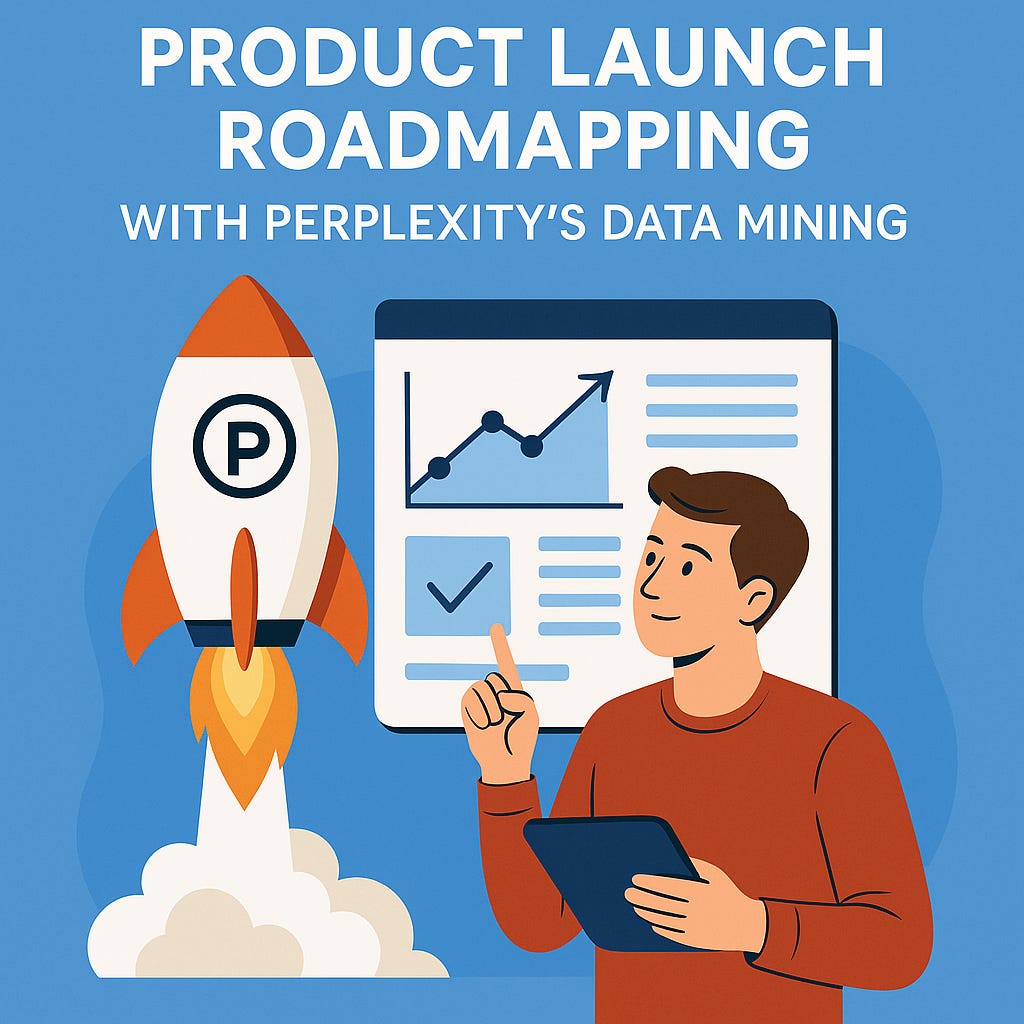Product Launch Roadmapping With Perplexity’s Data Mining
Written by Fred Ferguson – GeezerWise on Substack at www.geezerwise.com #Perplexity
Most product launches fail for one simple reason:
They’re built around your internal schedule instead of the market’s readiness to care.
You finish building, set a date, and roll out a campaign… without checking if the market is actually hungry for what you’re serving.
How Perplexity Puts Market Reality Into Your Roadmap
Perplexity’s Predictive AI can dig into audience behavior, competitor patterns, and timing cues to create a launch plan that matches when your market is ready — not just when you are.
1. Spot True Readiness Signals
What events, frustrations, or trends make your audience open to change?
2. Answer Pre-Launch Questions
What proof, demos, or explanations do they need before they’ll even consider trying you?
3. Learn From Past Winners
Analyze competitor launches to see what worked — and when.
4. Time It Right
Match your launch to buying seasons, budget cycles, or industry events.
5. Show Real Innovation
Highlight what feels fresh and exciting, not just “a bit better than before.”
6. Target Early Adopters First
Know who will try you first and how to turn them into advocates.
7. Nail Launch Pricing
Decide whether to start with a promo, premium, or anchor price — based on what your market responds to.
8. Build Strategic Partnerships
Line up integrations, co-marketing, or distribution partners before launch day.
9. Sequence Your Content for Maximum Anticipation
Educate, tease, reveal — in the right order — to build momentum.
10. Keep It Authentic
Avoid overhyping. Deliver on your promises.
11. Lock in Media & PR Opportunities
Know who will cover your space, and pitch them the right angles at the right time.
12. Make It Memorable
Create a launch moment people will talk about afterward.
13. Plan Post-Launch Fuel
What’s your follow-up to keep interest alive after the first wave of excitement?
14. Showcase Value in Demos
Lead with features and use cases that actually move the needle.
15. Reduce Risk for New Customers
Address fears and uncertainties directly.
16. Keep Growth Manageable
Don’t scale so fast you break your own systems.
17. Build Stickiness
Give people reasons to keep using your product long after launch day.
18. Track Early Signals
Engagement, adoption speed, and feedback will tell you if you’re on the right track.
19. Choose Where to Launch First
Global, regional, or niche rollout — match your reach to your resources.
20. Educate as Much as You Promote
Help your market understand how to get the most out of your product.
21. Prepare the Team
Define roles, responsibilities, and communication for a smooth rollout.
22. Have a Plan B
If the launch underperforms, know how to pivot quickly.
23. Involve Influencers Early
Get key voices talking about your product before the public sees it.
24. Make the Message Resonate
Focus on benefits that actually matter to your audience.
25. Ensure Compliance
Know the rules for your market so nothing derails you on launch day.
26. Create Urgency Without Gimmicks
Give people a real reason to act now.
27. Pick the Right Channels
Match your launch distribution to where your buyers already spend time.
28. Build a Supportive Community
Encourage user-generated buzz and positive conversations.
The Bottom Line
A great launch isn’t about pushing harder — it’s about launching smarter.
With Perplexity, you can map your timing, messaging, and partnerships to the real world your audience lives in — dramatically improving your odds of making launch day the start of something big.
💌 Know someone who’d appreciate this? Subscribe at GeezerWise.com to get future letters straight to your inbox.


